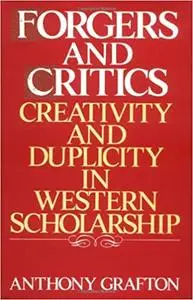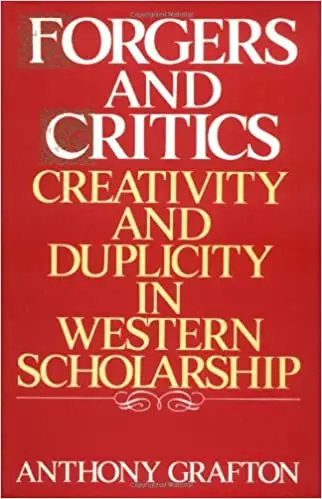Anthony Grafton, "Forgers and Critics: Creativity and Duplicity in Western Scholarship"
English | 1968 | ISBN: 0691055440 | 168 pages | PDF | 11.6 MB
English | 1968 | ISBN: 0691055440 | 168 pages | PDF | 11.6 MB
Just as it "takes a thief to catch a thief," so the forger greatly aids the search for historical truth, maintains Anthony Grafton in this wide-ranging exploration of the links between forgery and scholarship. Labeling forgery the "criminal sibling" of criticism, he describes a panorama of remarkable individuals–forgers, from classical Greece through the recent past, who produced a variety of splendid triumphs of learning and style, and scholarly detectives, who honed the tools of scholarship in attempts to unmask these skillful fakers. In the process he discloses the extent, the coherence, and the historical interest of two significant and tightly intertwined strands in the Western intellectual tradition. "The desire to forge," writes the author, "can bite and infect almost anyone: . . . the honest as well as the rogue." Forgers are inspired not only by ambition or greed but also by impulses to play jokes, exuberant desires to see the past made whole again, or serious wishes to invoke divine or distantly historical authority for particular spiritual or national traditions. Whatever their goals, forgers in classical antiquity as well as in the modern era have often been well ahead of critics in the pursuit of methods of authenticating documents, and Grafton shows that many techniques normally considered the invention of scholars in early modern Europe were already employed in classical times. This accessible work discusses forgers as different from each other as Dionysus the "Renegade," Erasmus, Carlo Sigonio, James Macpherson ("Ossian"), Thomas Chatterton, and the great sixteenth-century Dominican scholar Giovanni Nanni (Annius) of Viterbo, whose forged histories by Berosus, Manetho, and other ancient authors drove the real histories of the ancient world from the literary marketplace for almost a hundred years. One chapter is devoted to comparing three scholars–Porphyry (third century), Isaac Casaubon (1559-1614), and Richard Reitzenstein (1861-1931)–whose efforts to deal with the same body of forged material, the Hermetica, reveal both continuity and change in critical method. What emerges from Forgers and Critics is a new appreciation for a strange literary genre that has flourished for over 2500 years–amusing its uninvolved observers, enraging its humiliated victims, and, most importantly, contributing to a richer sense of what the past was really like.



